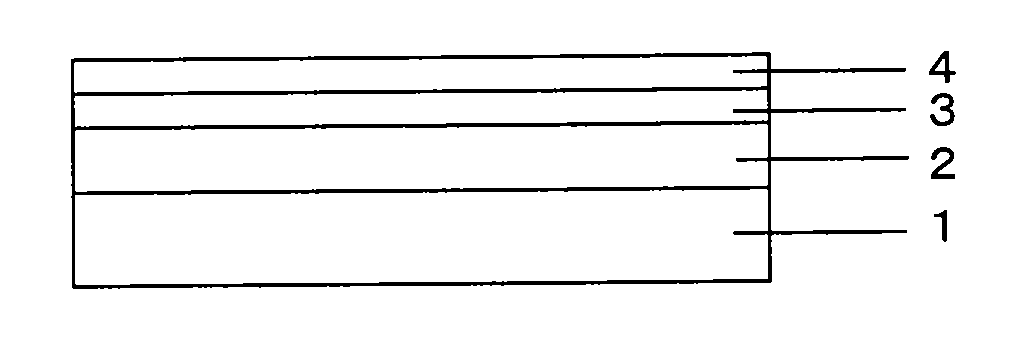Conductive laminate and method of producing the same
a technology of conductive laminate and conductive layer, which is applied in the direction of conductive layer on insulating support, applications, other domestic articles, etc., can solve the problems of cushion layer not giving cushioning effect, production may not be achieved at low cost, and the writing sense and input sensitivity of the touch panel are improved, and the effect of favorable durability
- Summary
- Abstract
- Description
- Claims
- Application Information
AI Technical Summary
Benefits of technology
Problems solved by technology
Method used
Image
Examples
example 1
[0171]A ‘film’ having a thickness of 188 μm was used as a substrate, KAYANOVA (registered trademark) FOP 1740 (manufactured by Nippon Kayaku Co., Ltd., solid content of 82% by weight) was diluted with toluene and methylethylketone at a ratio by weight of 1:1, to the solid content of 40% by weight and hence prepare a hard coating agent, the hard coating agent was applied to one face of the substrate by a micro-gravure coater (gravure line No. 80R, gravure rotation rate 100%) and dried at 80° C. for 1 minute, followed by UV irradiation at 1.0 J / cm2 and curing to thereby form a hard coating layer having a thickness of 5 μm.
[0172]Next, 1.40 g of ‘resin A’, 13.85 g of ‘resin B’, and 2.00 g of ethyl acetate were mixed and agitated to prepare a base resin layer coating solution. Using a bar coater No. 30 (manufactured by Matsuo Sangyo Co., Ltd.), the coating solution was applied to the other face opposed to the face of the substrate, on which the hard coating layer was provided, followed b...
example 2
[0174]Except that a base resin layer coating solution has the constitutional composition of; 1.40 g of ‘resin A’, 13.96 g of ‘resin B’, 0.041 g of ‘photo-polymerization initiator’, and 2.08 g of ethyl acetate and, after applying and drying a coating solution, UV ray was radiated at 1.2 J / cm2, the sample procedure as described in Example 1 was executed and ‘conductive layer A’ was stacked on the base resin layer having a coating thickness of 13 μm after drying, by gravure line No. 150R, thus resulting in a conductive laminate.
example 3
[0175]A ‘film’ having a thickness of 188 μm was used as a substrate, KAYANOVA (registered trademark) FOP 1740 (manufactured by Nippon Kayaku Co., Ltd., solid content of 82% by weight) was diluted with toluene and methylethylketone at a ratio by weight of 1:1, to the solid content of 40% by weight and hence prepare a hard coating agent, the hard coating agent was applied to one face of the substrate by a micro-gravure coater (gravure line No. 80R, gravure rotation rate 100%) and dried at 80° C. for 1 minute, followed by UV irradiation at 1.0 J / cm2 and curing to thereby form a hard coating layer having a thickness of 5 μm.
[0176]Next, 3.48 g of ‘resin A’, 8.92 g of ‘resin B’, and 7.59 g of ethyl acetate were mixed and agitated to prepare a base resin layer coating solution. Using a bar coater No. 30 (manufactured by Matsuo Sangyo Co., Ltd.), the base resin layer coating solution was applied to the other face opposed to the face of the substrate, on which the hard coating layer was prov...
PUM
| Property | Measurement | Unit |
|---|---|---|
| luminous transmittance | aaaaa | aaaaa |
| transparency | aaaaa | aaaaa |
| thickness | aaaaa | aaaaa |
Abstract
Description
Claims
Application Information
 Login to View More
Login to View More - R&D
- Intellectual Property
- Life Sciences
- Materials
- Tech Scout
- Unparalleled Data Quality
- Higher Quality Content
- 60% Fewer Hallucinations
Browse by: Latest US Patents, China's latest patents, Technical Efficacy Thesaurus, Application Domain, Technology Topic, Popular Technical Reports.
© 2025 PatSnap. All rights reserved.Legal|Privacy policy|Modern Slavery Act Transparency Statement|Sitemap|About US| Contact US: help@patsnap.com



